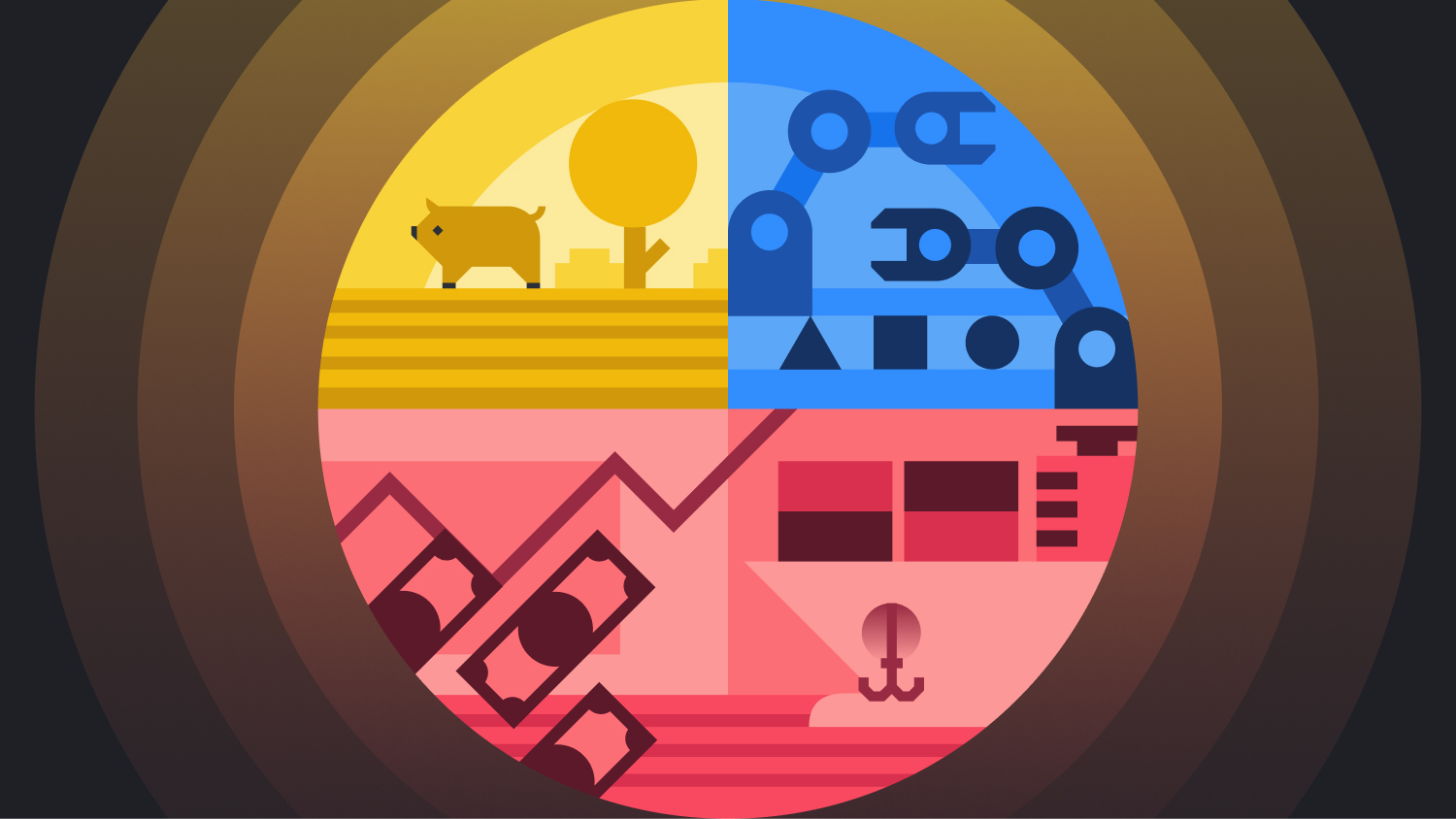Finance is split into three subgroups: personal, corporate, and public finance.
When times are tough, it’s easy to fear what we don’t understand.
To help make sense of our current economic crisis, we put together this article to introduce the basics of finance in a way that allows us to talk about the 2008 financial crisis and develop a better grasp on how economic cycles occur and how markets react.
What is finance, anyway?
Finance can be defined as the study and practice of gaining and spending money. The field of finance has come to divide itself into three subgroups: personal, corporate, and public finance.
Personal finance encompasses the ways that individuals and families raise and spend money, corporate finance examines the same for businesses, and public finance covers the ways governments get and spend money.
Social and behavioral finance have also grown into subcategories of finance but are considered more specialized. Social finance studies investments in organizations that do good for society and behavioral finance looks at the psychology behind earning and spending money. Economics and finance are closely related but where finance examines the cause of how money is raised and spent, economics looks at the effects of what happens when money is raised and spent in different ways.
Why do financial crises’ occur?
Part of what makes situations like our current economic downturn so difficult is the fact that not even the world’s greatest economists can predict what will happen in the future.
In spite of our inability to predict how things will turn out, we can still look at history to provide context and insight into what’s happening and how things might turn out.
Back in 2008, the U.S. economy started going haywire and not a lot of people understood why. Now, it’s relatively easy to learn and talk about how irresponsible loans involving subprime mortgages grew into a bubble that collapsed.
The Great Recession of 2008 happened because banks made loans to help people buy houses they couldn’t afford, packaged those loans, and resold them as investments.
When the economy took a downturn and people could no longer afford their homes, the bubble collapsed, leading to devastating rates of unemployment and housing foreclosures as businesses closed and governments bailed out big banks and corporations.
After the bubble collapsed, not only was the U.S. housing market affected; the event created a ripple effect that shocked the entire global economy.
Silver Lining? From this financial crisis, the original whitepaper for Bitcoin was written in 2009 by an anonymous author, Satoshi Nakamoto. Remember this name it will come back in our next series segment.
Where do bubbles come from?
Most things in the economy occur in cycles. There’s the business cycle, also known as the “economic” or “trade” cycle, which describes the alternating growth and contraction in the output of an economy.
There are also market cycles that global stock markets tend to go through and debt cycles for household and government debt.
When things operate “normally,” the downturns in these cycles help keep the economy in check by keeping the different sectors from getting too far out of sync with each other.
When something unsustainable - like selling subprime mortgages as grade A investments - goes on for too long, the bubble eventually bursts when the economy reaches a downturn and the amount of money invested in the underlying assets doesn’t match their true value.
What can we do about bubbles?
To try to prevent these bubbles from occurring, governments aim to affect the economy through fiscal policy while central banks try to affect it through monetary policy.
Fiscal policy refers to things like government spending and taxes while monetary policy refers to the way we create and distribute money.
Different people have different beliefs about what causes economic cycles but disparities between debt, spending, and productivity can lead to bubbles whether we’re talking about the U.S. economy or something as small as a neighborhood farmer’s market.
To mitigate the effects of our current situation, many governments are contemplating stimulus packages and the U.S. Federal Reserve, the central bank of the United States, has loosened monetary policy to inject cash into the economy and try to keep it going.
Follow along as we add to our Binance.US Education 101 Series: Your Guide to Crypto Literacy
#1 Demystifying Digital Dollars
#2 Evolution of the Internet
#3 Finance, Rhymes with …
#4 Back that Asset Class Up
#5 What are Cryptocurrencies?
#6 Defining Decentralized Finance
#7 Cryptoeconomics Explained
#8 Intro to Consensus Algorithms
Ready to learn more?
Stay tuned for our next Education 101 Series! Follow us on Twitter @BinanceUS
Learn Together. Earn Together.
Share Your Guide to Crypto Literacy + your Binance.US referral link with friends.
Start Trading Now!
Download the Binance.US app here
*Legal disclaimer:
This material has been prepared for general informational purposes only and should NOT be: (1) considered an individualized recommendation or advice; and (2) relied upon for any investment activities. All information is provided on an as-is basis and is subject to change without notice, we make no representation or warranty of any kind, express or implied, regarding the accuracy, validity, reliability, availability or completeness of any such information. Binance.US does NOT provide investment, legal, or tax advice in any manner or form. The ownership of any investment decision(s) exclusively vests with you after analyzing all possible risk factors and by exercising your own independent discretion. Binance.US shall not be liable for any consequences thereof.


